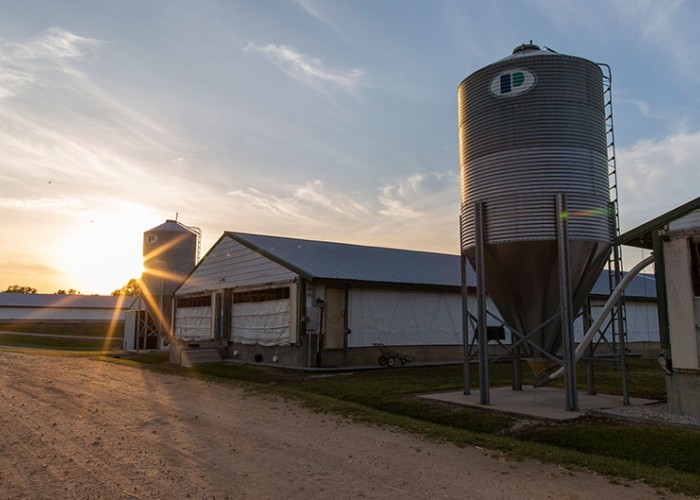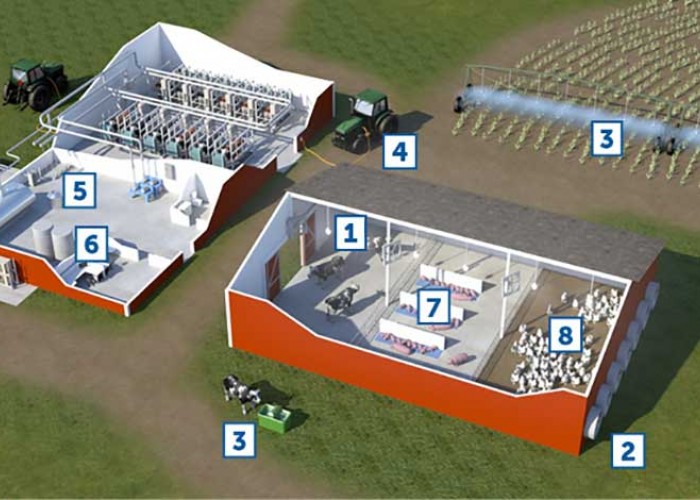Farming on a Modern Grid
New electric farm equipment can improve efficiency and help reduce costs
By Keith Dennis It might not be obvious when you turn the lights in your house, but we’re changing the way we produce and use electricity. With these changes come opportunities, including some exciting opportunities for co-op members who own and operate farms. By taking advantage of technology advances, agricultural members will be able to improve operations, save money and help the environment all at once.
It might not be obvious when you turn the lights in your house, but we’re changing the way we produce and use electricity. With these changes come opportunities, including some exciting opportunities for co-op members who own and operate farms. By taking advantage of technology advances, agricultural members will be able to improve operations, save money and help the environment all at once.
New electric technologies are more efficient than their diesel, propane and gas-powered counterparts. High-efficiency motors, batteries and communications systems are making these electric equipment and appliances more reliable, more flexible and more economical for new uses.
The way we generate electricity is also becoming cleaner. By using renewable energy sources as well as nuclear power, North Carolina’s electric cooperatives are reducing carbon dioxide and other emissions (see “Where Our Power Comes From,” June 2018, page 7).
All these factors create benefits for electrifying farm equipment including reduced energy costs, reduced maintenance costs, energy and water use optimization through sensors and smart controllers, noise and pollution reduction, and reduced labor costs through process automation.
The best news? These options are getting cheaper. Way cheaper. Here are some energy trends on the horizon for farmers:
- Irrigation systems. Traditional irrigation systems gobble significant amounts of energy. Typical diesel motors operate at about 30 to 40 percent energy efficiency, while some of the new electric systems have efficiencies of 90 percent or higher. High-efficiency electric irrigation systems can produce substantial cost savings. They also cost less to maintain. Newer models allow for a variable frequency drive, which can dramatically reduce irrigation costs.
- Electric tractors. John Deere debuted its “Sustainable Energy Supply for Agricultural Machinery” (SESAM) tractor in December 2016, the industry’s first fully battery-powered tractor. This tractor features a maximum output of 400 horsepower and can operate for up to four hours, with a recharging time of around three hours. Other manufacturers, such as Deutz, Fendt and AGCO, are also developing electric tractors in anticipation of an evolving marketplace. As with other electric vehicles, the price of lithium ion batteries will be a major factor determining whether and how electric tractors go mainstream.
- Space heating. Heating for livestock facilities is typically supplied by fossil fuel systems. Virtually all poultry broiler barns in the U.S. are heated with fossil fuels, for example, mostly propane (82 percent) and natural gas (13 percent). Switching to an electric system offers several advantages, including cost-savings opportunities from the increased efficiency of electric systems and more stable energy prices. In addition, barns using electric heat are more comfortable for the livestock.
Several commercially available technologies could provide electric heating, including thermal electric storage systems, waste heat recovery systems, electric radiant heaters and heat pumps. Electric water heaters, grain dryers and maple sap evaporators are also making their way to markets.
Electric co-ops are on the leading edge of innovation, working across the industry to prepare our electric system for the big changes that are coming.
Electric co-ops are on the leading edge of innovation, working across the industry to prepare our electric system for the big changes that are coming. In the end, however, regardless of how innovative a technology may be, the motivation of a farmer to electrify equipment ultimately comes down to cost and convenience.
Electricity transformed farms completely for previous generations of farmers. As costs continue to come down for new agricultural technologies, it promises to do so yet again for the next generation.
About the Author
Keith Dennis is senior director of Strategic Initiatives at the National Rural Electric Cooperative Association.-
More energy benefits for farms
-
Share this story:






